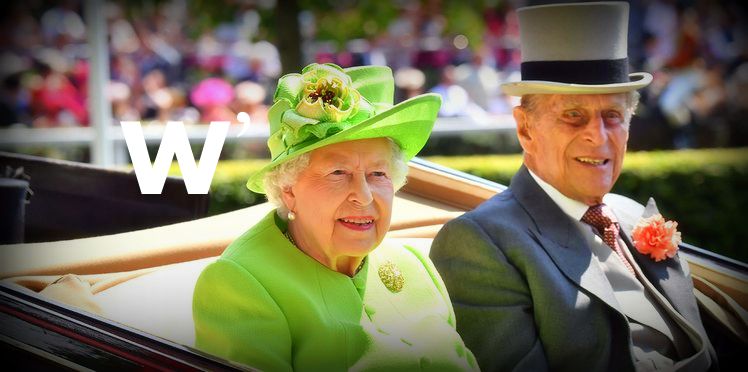As the Queen and Duke of Edinburgh celebrate their Platinum Wedding Anniversary,It is estimated that the total worth of the UK Monarchy. Growing every year is set to be around the value of approximately £67.5 billion!.

The Monarchy’s tangible assets – the Crown Estate, the Duchies of Lancaster and Cornwall, and the Royal Collection, including the Crown Jewels – account for £25.5 billion. The intangible value, understood as the present value of the benefits that the Monarchy is expected to bring the UK economy over the years, constitutes the remaining £42 billion.
Brand Finance estimates that in 2017 the Monarchy generated a gross uplift of £1.766 billion to the UK economy. The contribution includes the Crown Estate’s surplus as well as the Monarchy’s indirect effect on various industries. The respect for the institution boosts the price and volume premium of brands boasting a Royal Warrant or a Coat of Arms; the appeal of pomp and circumstance set in living royal residences draws millions of tourists; the mystique surrounding the Monarchy adds to the popularity of shows like The Crown and Victoria that offer a glimpse of the private lives of the Royal Family.
The economic benefits generated by the Monarchy come at a very low cost to the British nation, equal to only £4.50 per person per year or just over 1p a day. The overall costs of the Monarchy, totalling approximately £292 million, include the Sovereign Grant, earnings from the Duchies of Lancaster and Cornwall ceded to the Queen and the Prince of Wales, and security expenses, among others. A significant proportion of these costs is in fact incurred by residence maintenance, staff salaries, and travel expenditures required by any head of state.
The study distinguishes between the Monarchy and the Royal Family. The Monarchy is the institution of the hereditary head of state and its associated symbolism, while the term Royal Family refers to the incumbent monarch and their relatives as private persons. Both terms pertain to their application within the United Kingdom.
As such, the study looks at the commercial value that the institution of Monarchy constitutes and generates to the UK, rather than examining the private finances of the Windsor family. The Royal Family is relevant to this study only insofar as and when they act as carriers of the institution of Monarchy.
Approach
Brand Finance has estimated the value of the Monarchy as if it were a branded business. As assessing a branded business value involves a valuation of assets and revenue streams attached to a specific brand, we looked at the tangible value associated with the Monarchy as well as the intangible value, understood as the net present value of the Monarchy’s net annual contribution to the UK economy.
Tangible Assets
In arriving at the tangible value, we have included the worth of the Crown Estate, the Duchies of Lancaster and Cornwall, as given in audited public financial statements, and an estimation of the capital value of the Royal Collection. By different ownership routes these assets all belong to the nation as a whole while at the same time being directly linked to the Monarchy. They include business holdings, real estate, and valuable antiques, and as such are appreciating assets, generating revenue for the upkeep of the Monarchy and for the benefit of the nation.
The study does not take into account the private possessions of the Royal Family, including the Balmoral and Sandringham estates, as they are not in public ownership and thus do not influence the profit and loss of the Monarchy as a public institution.
Net Annual Contribution
In arriving at the net annual contribution, we have included both economic benefits and costs which we believed were impacted by the Monarchy.
Benefits include the direct surplus generated by the Crown Estate, as given in its annual report, and estimations of indirect annual uplifts to the UK economy, based on Brand Finance’s research, analysis, and experience. For instance, the impact of Royal Warrants and Coats of Arms was estimated using notional royalty rates, illustrating what could reasonably be charged for their use as licensed trademarks.
The study does not include any estimation of the stability factor that the Monarchy confers on UK capital markets, thereby reducing market risk and cost of capital.
Costs include the Sovereign Grant derived from the surplus of the Crown Estate, the annuity of the Duke of Edinburgh paid directly from the Treasury, earnings from the Duchies of Lancaster and Cornwall ceded by the state to the Queen and the Prince of Wales, and security expenses, among others. A significant proportion of these costs is in fact incurred by residence maintenance, staff salaries, and travel expenditures required by any head of state. The data for this part of the analysis has been drawn from various reputable sources such as the Royal Household and Republic.
Intangible Value
After netting off the benefits against the costs, the net annual economic contribution estimated for 2017 was forecast over a five-year period (2018-2022) using a growth rate sourced from the Office for Budget Responsibility. A discount rate was applied to each forecast period in order to convert the economic value uplift to a net present value and thus factor in the time value of money. The rate utilised was based on the yield on UK 30-year bonds at the time of the valuation.
We also calculated the economic value uplift into perpetuity from Year 5 (2022) by applying a perpetuity growth factor (using the 30-year compound annual growth rate of UK GDP) to the final explicit period’s net economic contribution. The study ignores tax as tax is paid to the Treasury.
Credits;
Brand Finance
No comments:
Post a Comment
Your comments are very much appreciated.Thanks for Stopping by!
Need To contact me?
Email: shalliespurplebeehiveads@gmail.com
Twitter: @shalliebee